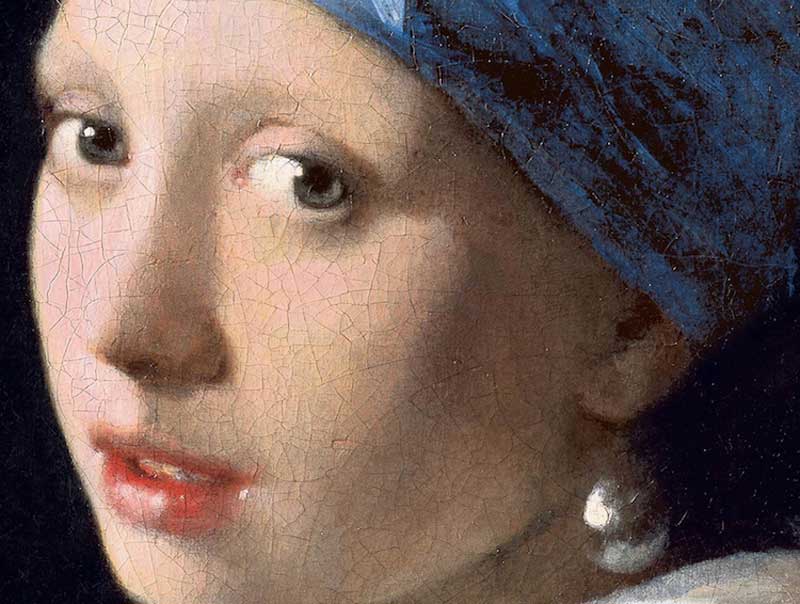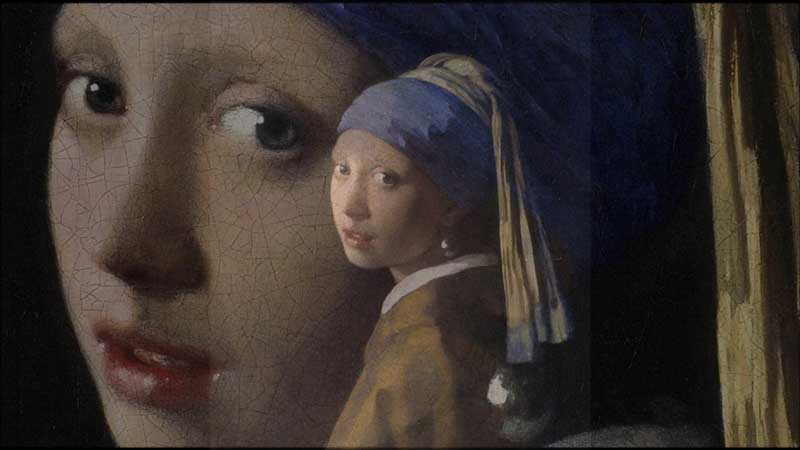
Girl with a Pearl Earring, considered as one of the most imposing paintings of the Dutch painter Johannes Vermeer, depicts a young girl dressed in a yellow jacket with a visible white collar beneath, an exotic oriental turban and a large pearl earring. She is caught in a fleeting moment as she turns her head to meet the viewer’s gaze with her wide liquid eyes and parted lips, as if to say something. Due to the enigmatic expression of the girl, coupled with the mystery of her identity, it is sometimes compared to Leonardo da Vinci’s iconic Mona Lisa. However, both are completely different.
It is not unlikely that Vermeer took the help of a young woman for his model, but unlike Mona Lisa, the painting is not meant to portray the model or any other specific individual. Here the artist’s subject is a generic young woman in her exotic attire and her facial expression. Although some critics describe it as the Mona Lisa of the North, Girl with a Pearl Earring is not a portrait, it is what the Dutch called a tronie, a head study, which typically feature an exaggerated facial expression or a subject in some sort of costume, which include the girl’s exotic turban.

Vermeer enhanced the sense of realism in the canvas measuring 17.05 inches (44.5 cm) high and 15 inches (39 cm) wide, through his expressive paint techniques. The young girl's half smile is enlivened with two small white dots on either side of her mouth, echoing the highlights in her eyes. The delicacy of her skin is evoked with a soft contour for her cheek and the artist indicated reflected light from the white color in the pearl earring and more subtly, in the shadows on her left cheek. In addition to the unique treatment of light, a costly ultramarine-toned paint, prepared from the powdered lapis lazuli, a rare semi-precious stone, was used for the bright blue turban of the girl.
Girl with a Pearl Earring was completed by Vermeer around 1665 and after his death, it was sold by his son-in law and ended up in the collection of the purchaser. It resurfaced after 200 years, when a Dutch art collector purchased it at an auction in The Hague in 1881, for only two guilders. Subsequently, after his death, it was moved to the Mauritshuis Museum in The Hague in 1902.Over the centuries, the painting has gone under a number of titles in various countries. After the bequest to the Mauritshuis Museum, the painting came to be known as Girl with a Turban and towards the end of the 20th century, it became known by its present title after the large pearl earring worn by the girl in the painting.

Girl with a Pearl Earring was carefully scanned with modern imaging techniques in 2018 by an international team of art experts and it was revealed that the mysterious sitter originally appeared not in a grey void, but in front of a dark green curtain and though invisible to the naked eye, the figure does, in fact, have eyelashes.